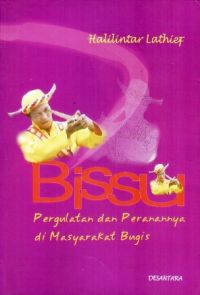Bissu: Pergulatan dan Peranannya di Masyarakat Bugis
- Title
- Bissu: Pergulatan dan Peranannya di Masyarakat Bugis
- Original language
- Indonesian
- Author(s)
- Illustrator(s)
- Publisher
- Desantara
- ISBN
- 9793596007
- Publication date
- 2004
- Subjects
- Find Book
- Related Env. Initiatives
- Related Places
- Related Biographies
- Related Children's Books
- Related Holidays
- Related Folktales
- Related Comics
- Related Lontar
- Linked words
Description(s)
Bissu is a priest of the ancient pre-Islamic Bugis religion. The leader of the bissu is a person who holds the title Puang Matowa or Puang Towa. Biologically, nowadays, bissu are mostly male (with a penis) and few are female (with a vagina). In his daily life, bissu look like women. So it is not easy to distinguish which bissu are male and which are female bissu. Reality like this is considered to make bissu considered not sunnatullah, because they are men but look like women. Bissu are also considered to deviate from religious teachings (in this case Islam), for example they are said to be idolaters. Even though they worship God according to the religious procedures they believe in. Because of this, there is often coercion of the existence and beliefs of the Bugis religion. DI/TII under Kahar Muzakar was a group that had ambitions to return the bissu to Islam. This group's actions often use violence. After the national riots in 65-66, under the pretext of eradicating communism, the government tried to eradicate local religions, including the Ancient Bugis religion. Local religions are considered non-religious because the system is not like the official religion recognized by the state. Facing pressure from community groups and the government, the bissu were forced to save themselves and some turned to the official religion. However, these pressures did not destroy the bissu as a whole, but could adapt to the fast changing times. This book tries to give an idea of who they are, the hierarchy of bissu institutions, the process of becoming a bissu and their current destiny. The author of this book is Halilintar Lathif, an NGO activist who has been intimate with bissu for decades, so that his understanding of bissu cannot be doubted.


Enable comment auto-refresher